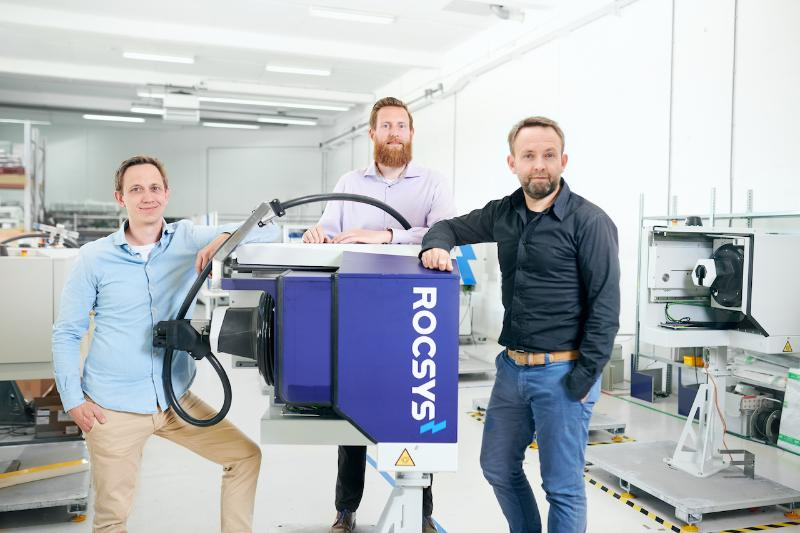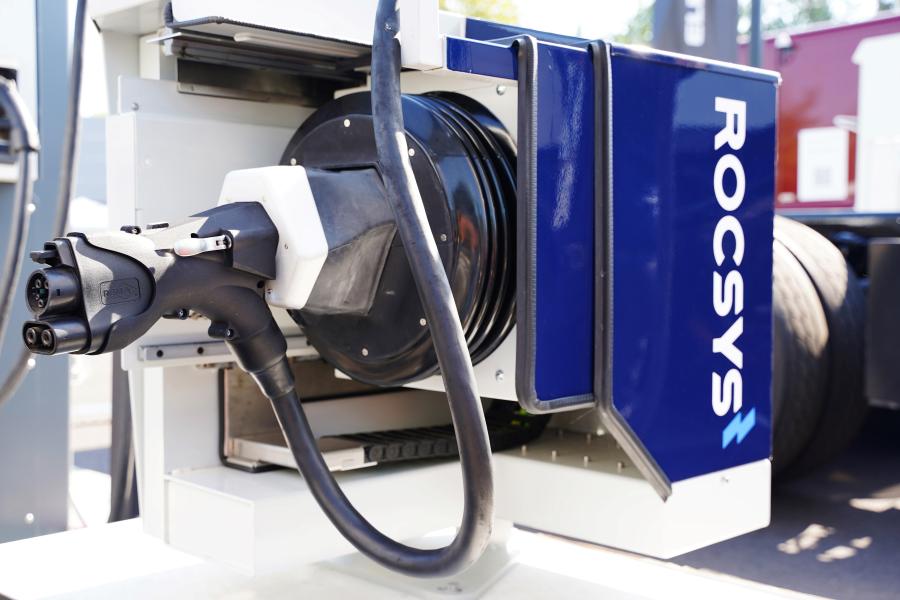A Dutch company believes robotic charging could make electric mobility much more attractive. Here’s how Rocsys adapts medical technology to speed the green transition
For many years, Crijn Bouman never understood why companies put so much time into making electric cars, while no one did much to improve the charging process. Driven by a passion for electric mobility, he decided to do something about it.
“I think electric mobility is starting to become mainstream,” says Bouman, an entrepreneur in electric charging systems. “Now, renewable energy is what’s being asked of all of us.”
To tackle the lack of ingenuity in charging systems, Bouman and two robotics experts created Rocsys in 2019 in Rijswijk, the Netherlands. The company is developing robotic arm equipment that connects charging cables to vehicles using touch sensors to mimic human actions. Its first-generation product, ROC-1, is now used in ports, logistics operations, and professional fleets.
It’s a technology that could go a long way towards enticing drivers to make the switch from fossil-fuel cars to electric vehicles – difficulties in charging are often cited as reasons people haven’t already moved to electric in greater numbers. Rocsys hopes that its robotic charging systems will make charging seamless and more convenient, encouraging more people to use electric mobility. That could have significant implications for climate change, because carbon emissions are currently growing in the transport sector worldwide, just when they need to be cut.
To finance the further development of its technology, Rocsys signed an €18 million loan in July 2023 with the European Investment Bank. The loan is part of the European Commission’s InvestEU programme, which aims to boost investments in innovation, social inclusion, and job creation.
Electric mobility goes mainstream with robotic charging
Crijn developed his first electric-charging company, Epyon, in 2005, making fast chargers for electric cars. He recognized that there was a lack of charging infrastructure, and a lack of industry standards. Crijn wanted to do more to contribute to electric mobility.
“When I started my first company, people said electric cars were impossible,” he says. “Nobody wanted to buy them.”
Crijn knew that attitudes would change if the technology improved. His latest company, Rocsys, had one initial challenge –– robotics come at a very high cost. With the ROC-1, the company's first product, he found a cost-effective solution to high-priced robots. It draws inspiration from wearable robotics in the medical field, specifically exoskeletons, which are powered devices that attach to a human body and contain actuators that aid movement.

The product's tactile sensors help a mechanical arm navigate around the charging systems and prevent injury from physical contact. It offers a safer alternative to traditional robotics, which can be rigid and potentially dangerous.
New models for robotic charging
The company now aims to develop a smaller and lower cost-operating next generation of ROC with the European Investment Bank loan.
The Rocsys team aims to meet customer demands for safe, easy to use and affordable charging solutions. The new models will be developed from 2023 to 2026, and then offered to car manufacturers, automated vehicle operators and charging companies. If everything goes as planned, electric car drivers soon will be able to park at a charging station and recharge their cars without leaving the driver’s seat.
The Rocsys system can also be integrated into existing charging infrastructure.
“One of the big benefits,” says Crijn, “is that you can upgrade an existing charger to an automated charger. All these billions of euros in investment made today are not obsolete. They can be upgraded for the next 10 to 15 years to take on electric and automated vehicles.”

Developing the electric charging standard
Rocsys is in talks with European car manufacturers to help them make charging systems widely available to the public.
The company is also working on developing industry standards for electrical vehicle chargers with the car manufacturers. There are few established norms and standards for this technology, and Rocsys wants to take a leading role in creating the foundation for better electric vehicle charging.
Embracing the transition towards zero emissions in Europe
Rocsys aims to make Europe a leader in charging infrastructure.
“I think it would be a really big risk for Europe to miss out on technological advancements like these,” Crijn says. “We really risk being far behind. I am hopeful for the future, but I hope we are not too late.”
Currently, China is far ahead in terms of the number of electric vehicles on the road. Crijn, however, sees the transition to zero emissions as an opportunity for Europe to lead the way in key sectors.
“For us, EIB funding is a big stamp of approval,” says Crijn, “and certainly it’s the kind of investment which gives us the stability we need, because it’s a very dynamic market. We need to have a stable basis to innovate and not be pushed by the forces of the market.”
